於此為始,至此為止的 / 他方
from here / to here
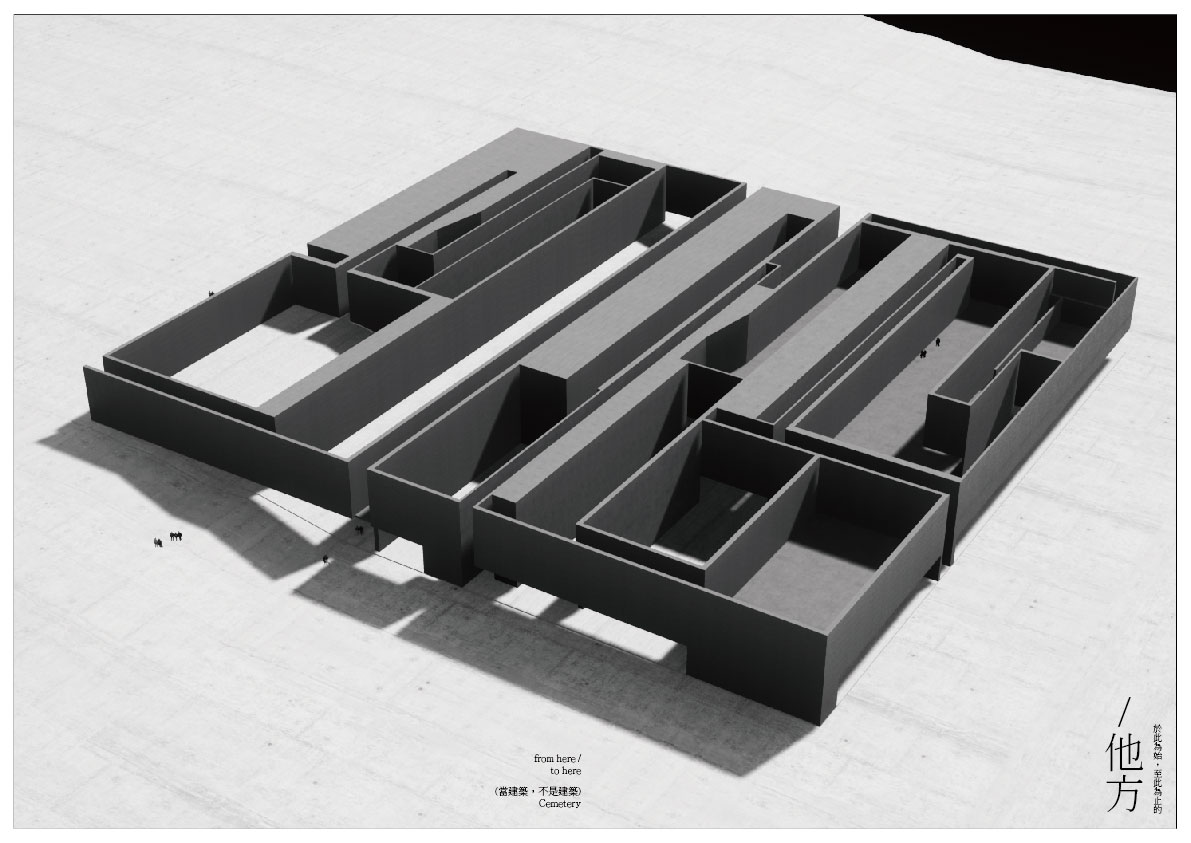
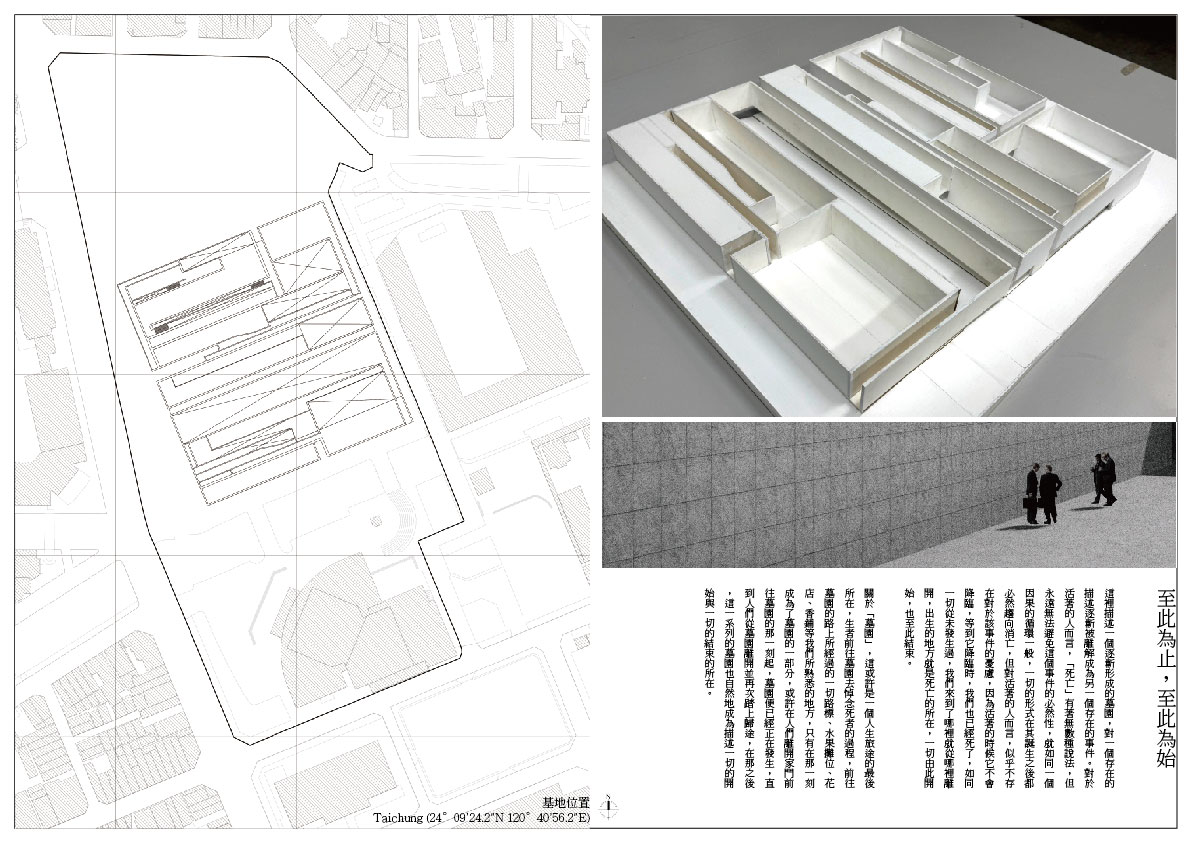
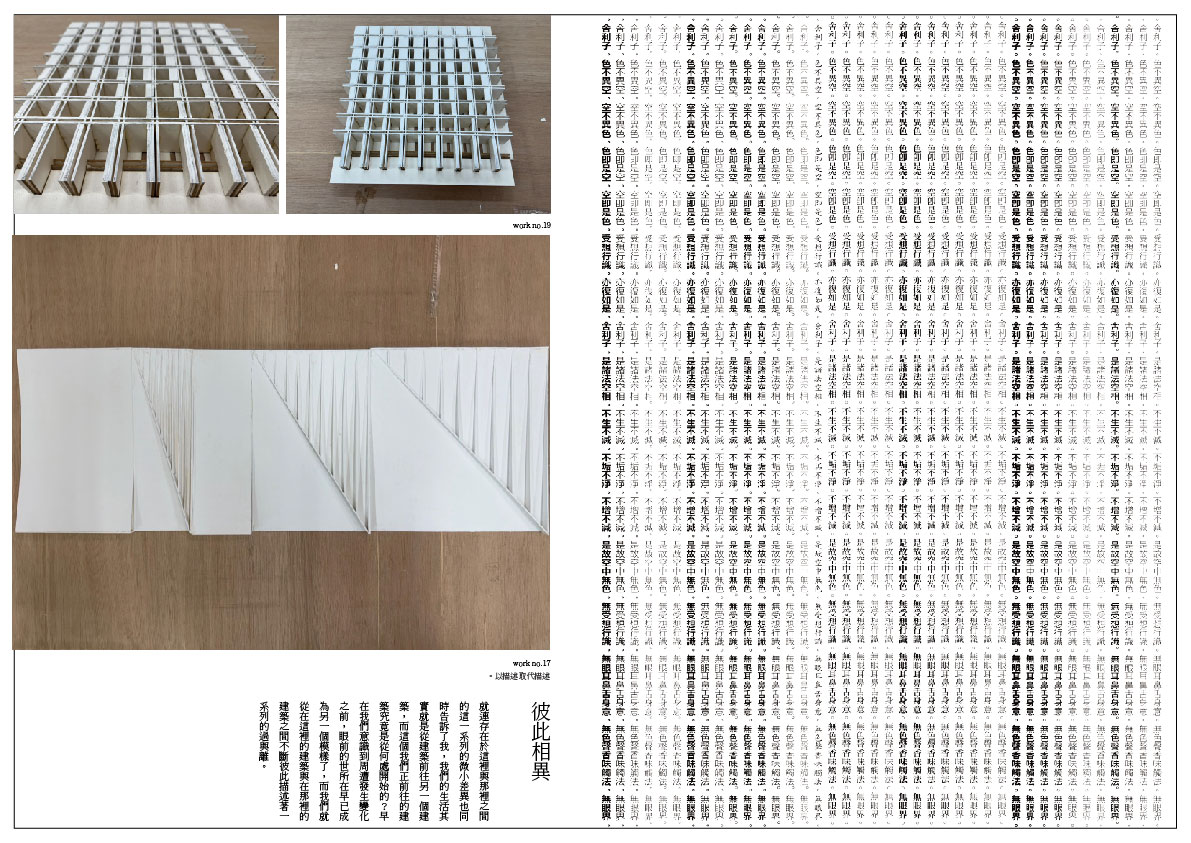
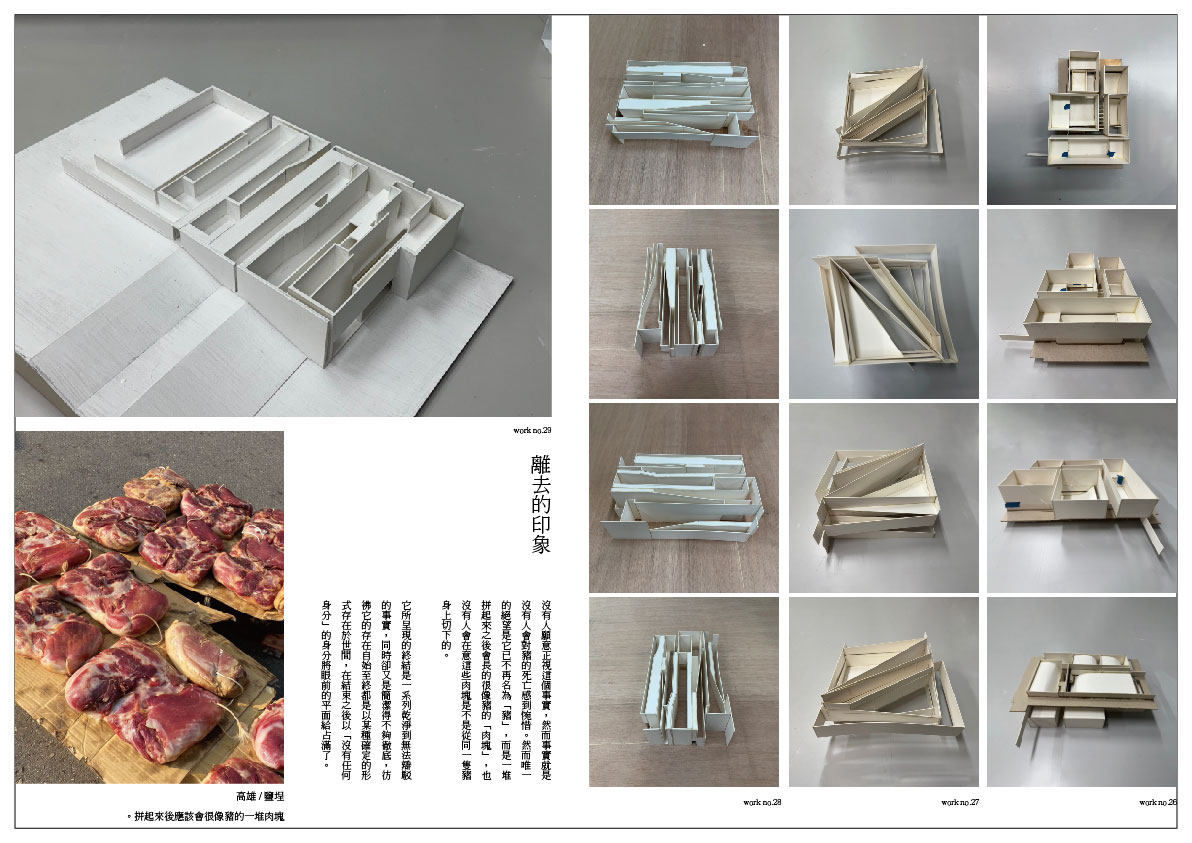
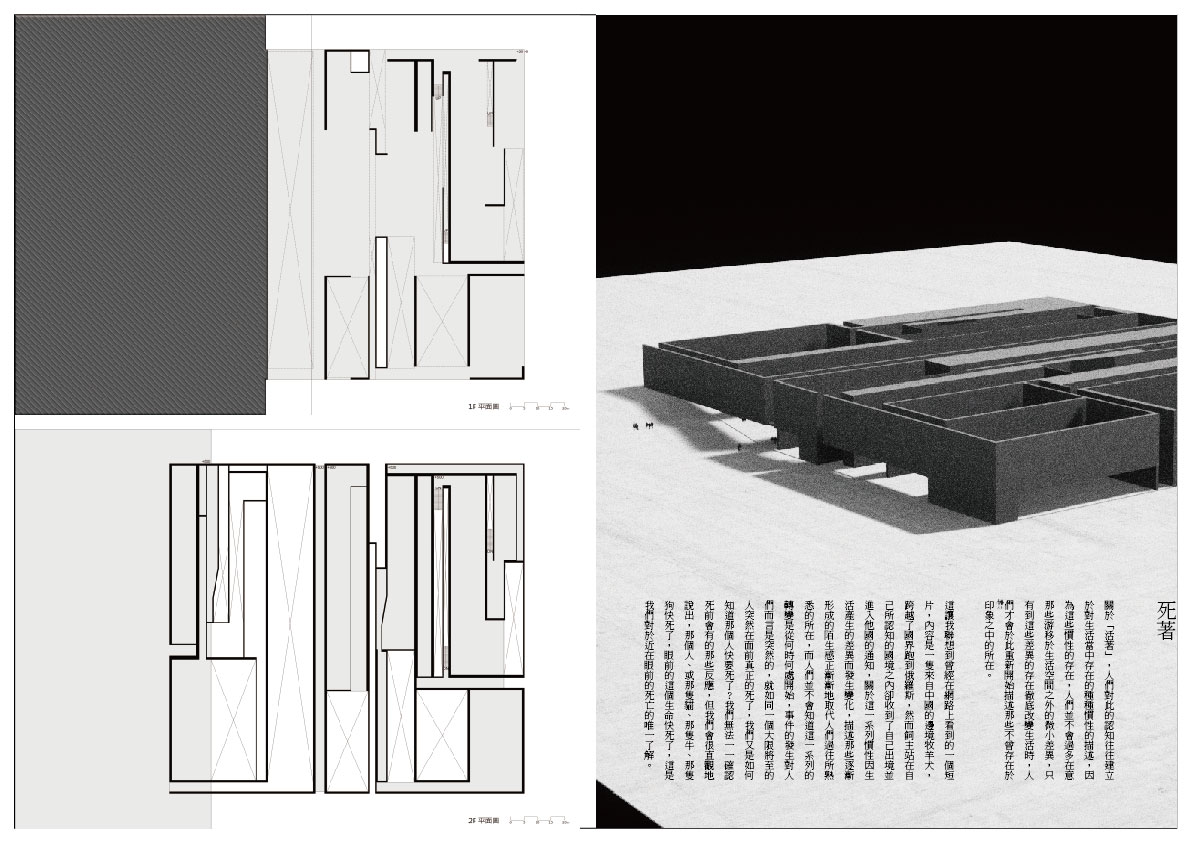
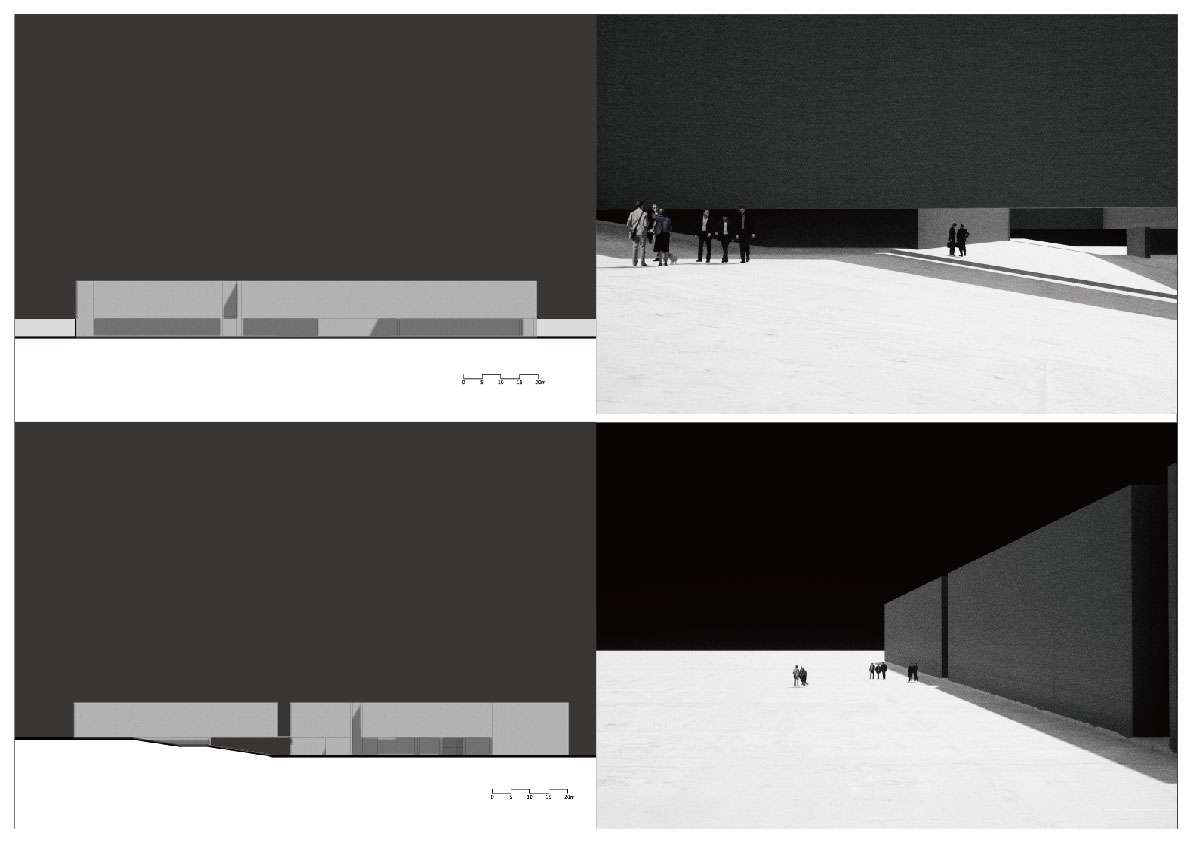
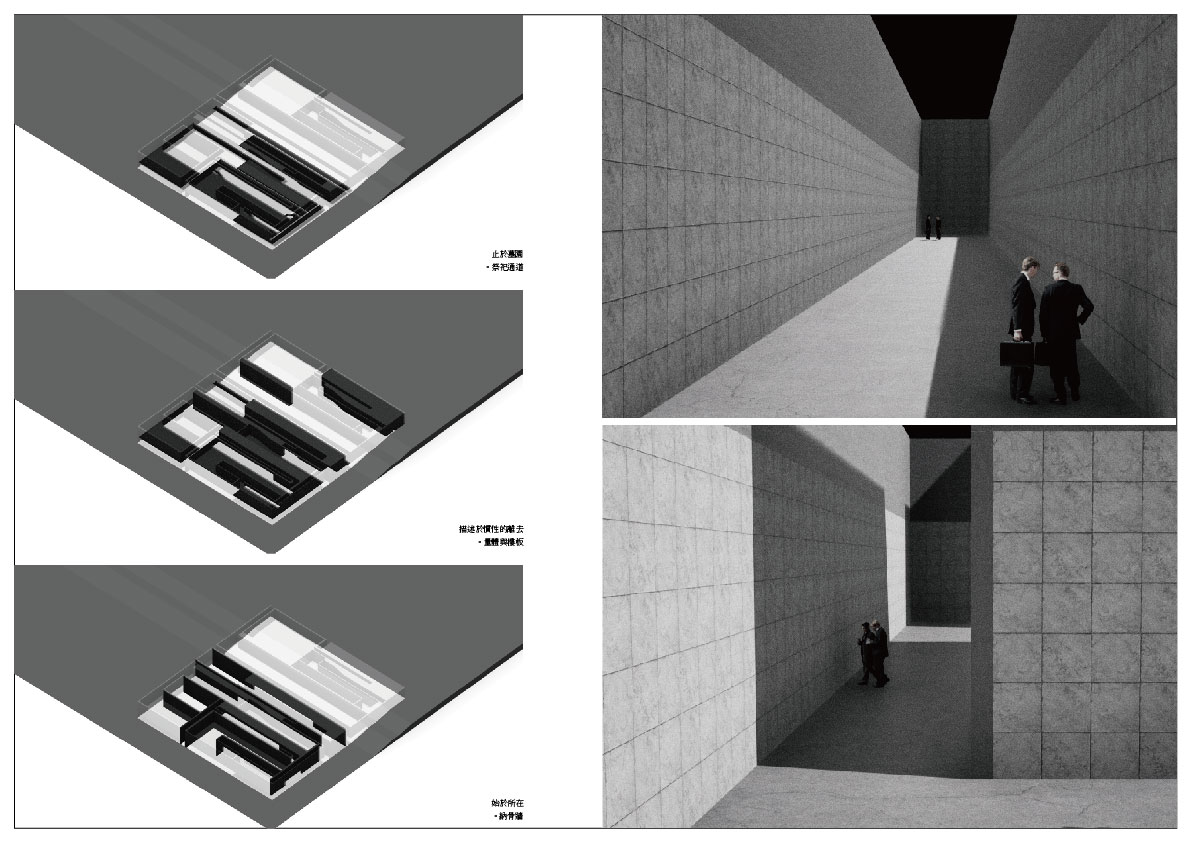
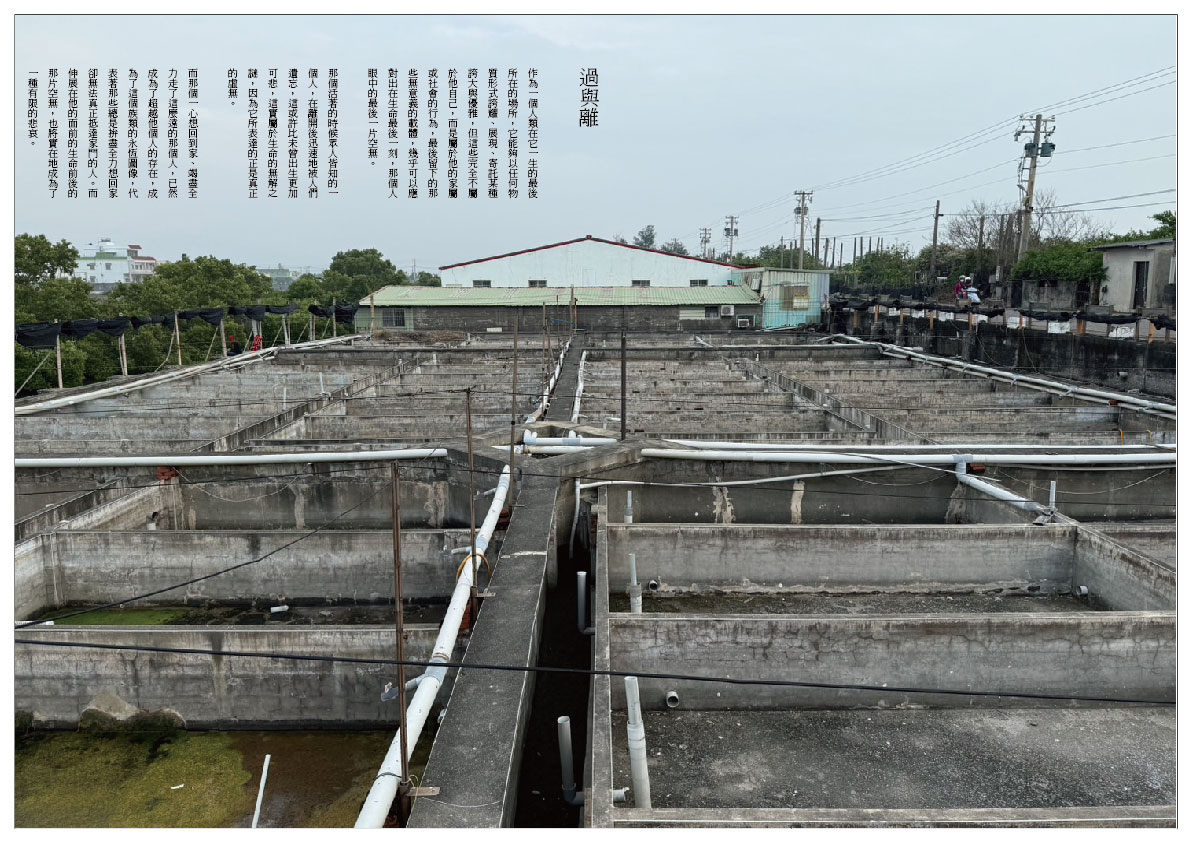
這裡描述一個逐漸形成的墓園,對一個存在的描述逐漸被離解成為另一個存在的事件。對於活著的人而言,「死亡」有著無數種說法,但永遠無法避免這個事件的必然性,就如同一個因果的循環一般,一切的形式在其誕生之後都必然趨向消亡,但對活著的人而言,似乎不存在對於該事件的憂慮,因為活著的時候它不會降臨,等到它降臨時,我們也已經死了,如同一切從未發生過,我們來到了哪裡就從哪裡離開,出生的地方就是死亡的所在,一切由此開始,也至此結束。
關於「墓園」,這或許是一個人生旅途的最後所在,生者前往墓園去悼念死者的過程,前往墓園的路上所經過的一切路標、水果攤位、花店、香鋪等我們所熟悉的地方,只有在那一刻成為了墓園的一部分,或許在人們離開家門前往墓園的那一刻起,墓園便已經正在發生,直到人們從墓園離開並再次踏上歸途,在那之後,這一系列的墓園也自然地成為描述一切的開始與一切的結束的所在。
關於「活著」,人們對此的認知往往建立於對生活當中存在的種種慣性的描述,因為這些慣性的存在,人們並不會過多在意那些游移於生活空間之外的微小差異,只有到這些差異的存在徹底改變生活時,人們才會於此重新開始描述那些不曾存在於印象之中的所在。
from here / to here
This passage describes a cemetery that is gradually taking shape—where the description of one existence is slowly dismantled, transforming into the event of another’s existence. For those who are alive, "death" has countless interpretations, yet its inevitability remains inescapable. Like an endless cycle of cause and effect, all forms, once brought into being, inevitably move toward dissolution. Yet for the living, there seems to be little concern over this event, for while we are alive, death has not yet arrived, and when it does, we will no longer be here. It is as if nothing ever happened—we depart from the very place we arrived, and the site of our birth is also the site of our death. Everything begins here, and everything ends here.
Regarding the cemetery, it may be considered the final destination of one's journey through life. The living visit cemeteries to mourn the dead, and in doing so, the entire journey there—the road signs, fruit stands, flower shops, and incense stores that line the path—momentarily becomes an extension of the cemetery itself. Perhaps the cemetery begins to take shape the moment people step out of their homes and set forth on their way, unfolding as they pass through familiar landmarks. It continues to exist until they leave the cemetery and embark on their return journey. In this way, the cemetery is not merely a fixed space but a process—one that marks both the beginning and the end of a narrative, defining the cycle of departure and return.
As for being alive, our understanding of it is often constructed through the habitual patterns that shape our daily existence. These routines create a sense of continuity, causing us to overlook the subtle differences that drift on the periphery of our lived spaces. Only when these differences disrupt the familiar, altering the rhythm of our lives, do we pause to acknowledge them. It is at this moment that we begin to articulate the existence of places that previously remained outside the realm of our awareness.
國立臺南藝術大學 建築藝術研究所
(二年級) 指導老師 王為河